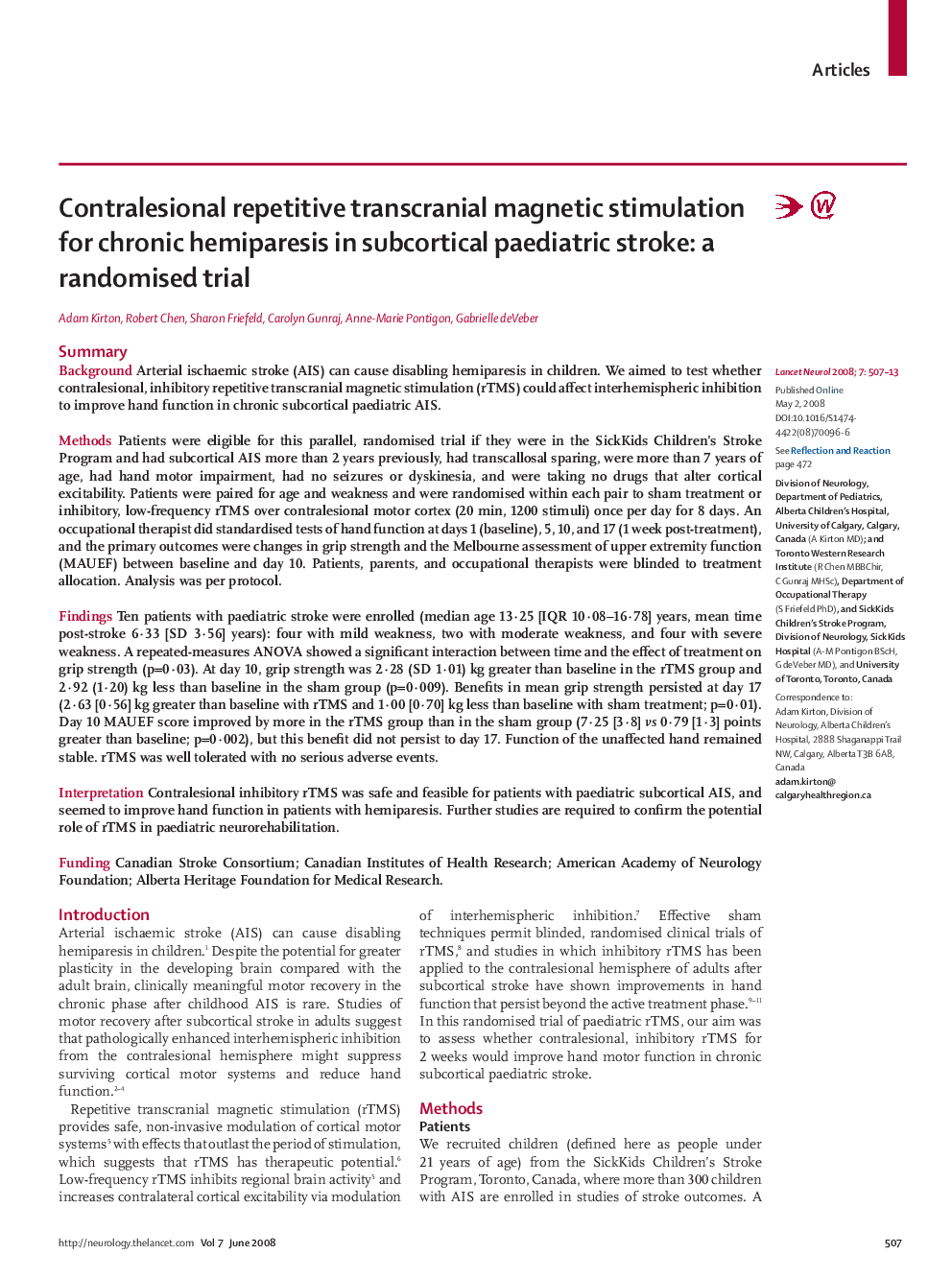| Article ID | Journal | Published Year | Pages | File Type |
|---|---|---|---|---|
| 3067630 | The Lancet Neurology | 2008 | 7 Pages |
SummaryBackgroundArterial ischaemic stroke (AIS) can cause disabling hemiparesis in children. We aimed to test whether contralesional, inhibitory repetitive transcranial magnetic stimulation (rTMS) could affect interhemispheric inhibition to improve hand function in chronic subcortical paediatric AIS.MethodsPatients were eligible for this parallel, randomised trial if they were in the SickKids Children's Stroke Program and had subcortical AIS more than 2 years previously, had transcallosal sparing, were more than 7 years of age, had hand motor impairment, had no seizures or dyskinesia, and were taking no drugs that alter cortical excitability. Patients were paired for age and weakness and were randomised within each pair to sham treatment or inhibitory, low-frequency rTMS over contralesional motor cortex (20 min, 1200 stimuli) once per day for 8 days. An occupational therapist did standardised tests of hand function at days 1 (baseline), 5, 10, and 17 (1 week post-treatment), and the primary outcomes were changes in grip strength and the Melbourne assessment of upper extremity function (MAUEF) between baseline and day 10. Patients, parents, and occupational therapists were blinded to treatment allocation. Analysis was per protocol.FindingsTen patients with paediatric stroke were enrolled (median age 13·25 [IQR 10·08–16·78] years, mean time post-stroke 6·33 [SD 3·56] years): four with mild weakness, two with moderate weakness, and four with severe weakness. A repeated-measures ANOVA showed a significant interaction between time and the effect of treatment on grip strength (p=0·03). At day 10, grip strength was 2·28 (SD 1·01) kg greater than baseline in the rTMS group and 2·92 (1·20) kg less than baseline in the sham group (p=0·009). Benefits in mean grip strength persisted at day 17 (2·63 [0·56] kg greater than baseline with rTMS and 1·00 [0·70] kg less than baseline with sham treatment; p=0·01). Day 10 MAUEF score improved by more in the rTMS group than in the sham group (7·25 [3·8] vs 0·79 [1·3] points greater than baseline; p=0·002), but this benefit did not persist to day 17. Function of the unaffected hand remained stable. rTMS was well tolerated with no serious adverse events.InterpretationContralesional inhibitory rTMS was safe and feasible for patients with paediatric subcortical AIS, and seemed to improve hand function in patients with hemiparesis. Further studies are required to confirm the potential role of rTMS in paediatric neurorehabilitation.FundingCanadian Stroke Consortium; Canadian Institutes of Health Research; American Academy of Neurology Foundation; Alberta Heritage Foundation for Medical Research.
